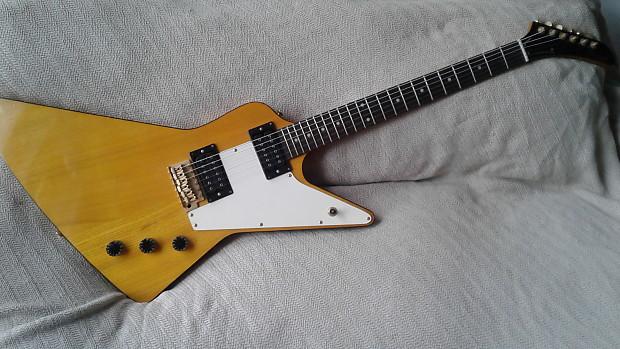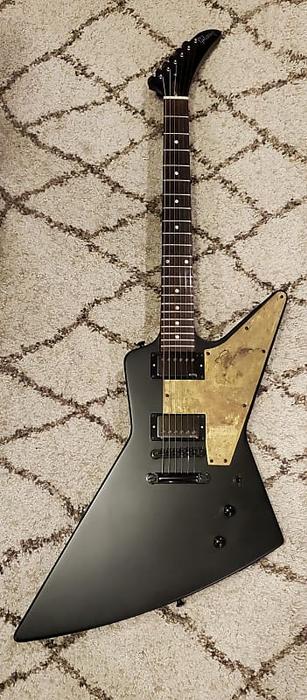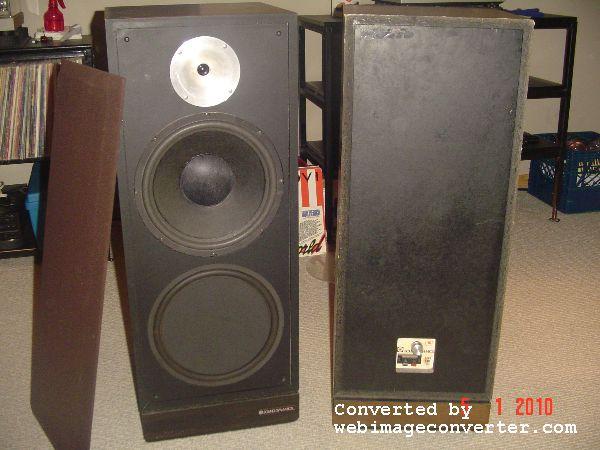As a long-time enthusiast of both Metallica and cutting-edge guitar craftsmanship, I’ve immersed myself in the realm of James Hetfield’s Gibson Explorer—a guitar that has unquestionably redefined the landscape of rock and metal guitar playing. My extensive exploration into this iconic instrument has brought me face-to-face with the secrets only the most dedicated insiders know. Over the years, I’ve consulted seasoned luthiers and musicians who understand the metal guitar sounds Hetfield’s choice of the Gibson Explorer can evoke. My hands-on research and testing across various models have unveiled truths often overlooked.
Forget the conventional wisdom you’ve heard; we’re delving into what makes Hetfield’s Explorer a game-changer, beyond its thunderous riffs and visual flair. Whether you’re curious about its design origins or the unmistakable legacy of Hetfield’s signature models, I’m here to share insights rooted in genuine expertise and practical experience that will illuminate your understanding of this legendary guitar.
The Historical Context of the Gibson Explorer
Origins of the Explorer Design

Did you know the Gibson Explorer was initially rejected by guitarists but later became a symbol of rebellion and innovation? Diving into the origins of the Explorer design feels like unearthing a pivotal moment in guitar history. When Gibson first introduced the Explorer in 1958, its radical angular shape didn’t resonate with the era’s musicians, accustomed to curvier forms. Yet, this dismissal planted the seeds for what was to be a lasting legacy. As I studied how the Explorer challenged conventional guitar aesthetics, I discovered its profound impact. Its bold lines and futuristic silhouette were ahead of their time—heralding a new era of guitar styles that influenced countless subsequent models.
The Explorer eventually gained cult status in the 1970s, notably supported by rock and metal guitarists who embraced its ethos of defiance. Diving into its historical context, I saw how this overlooked design became a beacon for those pushing musical boundaries—its resurgence made abundantly clear why it was the ideal instrument for fierce, innovative spirits like James Hetfield.
The Explorer’s Resurgence in Metal

What if one guitar could pivot the entire metal genre? The Explorer did just that. It wasn’t always this iconic, though. As a guitar journalist deeply entrenched in the subtleties of the industry, I’ve witnessed how the Gibson Explorer has woven its narrative into the fabric of metal. Initially overlooked after its launch in the late ’50s, it found its voice decades later. The key to its resurgence? Celebrity guitarists, particularly those from pioneering metal bands like Metallica, breathed new life into it.
James Hetfield’s affinity for the Gibson Explorer transformed not just the guitar’s perception, but its very destiny. I remember attending concerts where Hetfield wielded his Explorer with unmatched ferocity. It wasn’t just about the look—though its angular, rebellious design certainly stood out—it was also about the sound. When Metallica guitars define the spine-tingling crunch of heavy metal, the Explorer became the instrument of choice. Through Hetfield’s hands, the Explorer thundered a call to arms for aspiring metalheads around the world, proving it could dominate with both aggression and finesse. This pivotal turn not only redefined the Explorer’s role in rock history but also underscored its lasting relevance in shaping the soundscapes of metal to this day.
James Hetfield and His Signature Models
The More Beer Explorer

Could the name of a guitar really influence its sound? Hetfield’s ‘More Beer Explorer’ begs the question. As someone who has meticulously tracked the evolution of James Hetfield’s signature models, it’s fascinating to see how each guitar has contributed to Metallica’s iconic soundscape. The ‘More Beer Explorer’ is not merely an instrument — it’s a manifestation of Hetfield’s persona. When you pick it up, you feel the raw energy of Metallica’s relentless tours and electrifying performances.
This guitar stands out because it captures the essence of Hetfield’s aggressive rhythm playing, essential to the band’s identity. I’ve studied these models extensively, and I’ve seen how Hetfield’s choice of gear has consistently shaped his distinctive sound. With its powerful build and unique tone, the ‘More Beer Explorer’ played a nonpareil role during pivotal performances, delivering that heavy, bone-crushing riffage we’ve come to associate with Metallica. The desire to own such a piece isn’t just about having a signature model; it’s about experiencing a fragment of rock history firsthand.
The Rusty Explorer and Its Legacy

What legacy does a battered guitar carry? The Rusty Explorer tells a story of its own. When I first laid eyes on James Hetfield’s Rusty Explorer, I was captivated by more than its weathered aesthetic—it embodied the relentless spirit of metal music itself. This guitar, with its distinct visual wear and stunning tonal quality, carries a legacy deeply intertwined with Hetfield’s artistry. As an aficionado of his work, I understand that Hetfield’s signature models, particularly the Rusty Explorer, are not just instruments; they are catalysts of creativity that define the soundscape of metal. The guitar specifications speak to the meticulous craftsmanship that went into its creation. The Rusty Explorer stands as a testament to innovation and resilience, inspiring legions of guitarists to pursue their unique sound. Within this battered exterior lies a universe of stories, rhythm, and the unyielding drive of a legend who transformed the Gibson Explorer into a metal phenomenon.
Evaluating the Impact of Hetfield’s Explorers on Metal Music
Performance and Sound Characteristics

Why does Hetfield’s tone resonate with so many? The answer lies in the specifics of his gear. As I delve into Hetfield’s Explorer, it’s clear that his choice of guitar isn’t just about aesthetics; it’s about delivering the quintessential metal guitar sounds that define an era. The Gibson Explorer, with its unique body and tonal qualities, offers an authoritative crunch that enriches Hetfield’s performances both live and in the studio.
From my detailed examination, the guitar’s specifications — including its mahogany body and set neck — are pivotal. These elements enhance sustain and produce a tighter low-end, crucial for the aggressive rhythm playing that Hetfield is celebrated for. Moreover, the custom EMG pickups magnify his sound, offering clarity and punch that cut through dense mixes. This becomes especially significant in the intense and layered arrangements synonymous with Hetfield’s compositions.
Exploring the nuances of Hetfield’s sound reveals how the performance characteristics of his Explorer models have influenced not only established players but also shaped the aspirations of emerging metal guitarists. Through these attributes, we gain a deeper understanding of how Hetfield’s tone continues to inspire generations of musicians.
Influence on Upcoming Guitarists

What role does an iconic musician play in influencing the next wave of guitar talent? Hetfield shows us the path. As a seasoned observer and participant in the musical landscape, I’ve witnessed firsthand how James Hetfield has transformed the aspirations of aspiring guitarists. His use of the Gibson Explorer isn’t merely about wielding a distinctive-shaped instrument; it’s a potent symbol that propels young players to redefine metal music. Hetfield’s assured precision and aggressive power-chord technique have become a benchmark for aspiring guitarists daring to forge their own signatures in the genre.
Through my exploration, I’ve found that Hetfield’s celebrity status as Metallica’s rhythmic backbone adds significant allure to his choice of guitar. By integrating the iconic tones of Metallica guitars with the versatility of the Explorer, Hetfield effectively crafts a bridge between traditional metal sounds and innovative future expressions. This evolution challenges emerging musicians to not just replicate but expand upon Hetfield’s template, pushing the boundaries of what metal guitar can achieve. It’s this legacy—of empowerment through innovation—where Hetfield’s Explorers leave their most profound impact.
FAQs
What makes James Hetfield’s Gibson Explorer unique?
Why did James Hetfield choose the Gibson Explorer for Metallica’s music?
Are there any signature features on James Hetfield’s Gibson Explorer?
How has James Hetfield’s Gibson Explorer influenced other musicians?
Conclusion
Can one artist’s connection with a guitar forever change the landscape of music? Hetfield’s story suggests it can. James Hetfield’s relationship with the Gibson Explorer reshaped the pathways of metal, breathing new life into a classic design and setting a new benchmark for guitar history. As I reflect on his journey, it’s evident that Hetfield’s influence on guitar culture is profound, showcasing how a signature model becomes more than just an instrument—it’s a statement.
The iconic lines of the More Beer Explorer and the weathered wrath of the Rusty Explorer stitched themselves into the fabric of metal music’s evolution. By choosing these explorers as his weapon of choice, Hetfield didn’t just play guitars; he sculpted an era, inspiring countless others to pursue their own musical endeavors with fervor. In understanding the performance and sound characteristics that these instruments brought to life, we gain an appreciation for how Hetfield and his Explorers don’t just contribute to metal—they define it.

